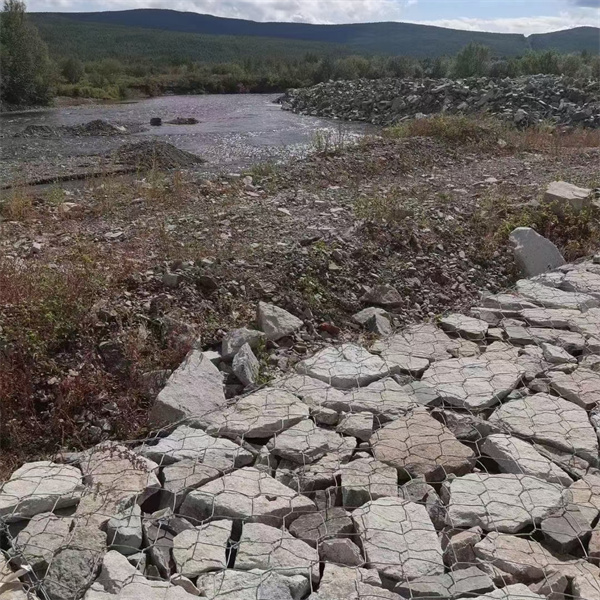Dec . 03, 2024 17:37 Back to list
China's Innovative Gabion Sphere Design for Sustainable Landscaping Solutions
Exploring the Innovation of China Gabion Sphere
In the realm of modern engineering and architecture, innovative materials and construction methods play a pivotal role in shaping the landscapes we inhabit. Among these materials, gabions have gained traction for their sustainability, versatility, and aesthetic appeal. Particularly, the concept of the “gabion sphere” has emerged as a noteworthy development, especially in the bustling construction markets of China. This article delves into the unique characteristics and applications of gabion spheres, shedding light on why they are becoming an increasingly popular choice in contemporary infrastructure projects.
What Are Gabions?
Gabions are wire mesh containers typically filled with rocks, concrete, or other sustainable materials. They have been used for centuries, primarily for erosion control in riverbanks and slopes, but their applications have expanded dramatically in recent years. Their flexibility allows them to conform to various shapes and sizes, making them ideal for a range of construction and landscaping projects. Gabions provide both structural integrity and aesthetic value, serving both functional and decorative purposes in urban design.
The Emergence of Gabion Spheres
The gabion sphere, a unique twist on traditional gabion uses, represents a confluence of design and engineering. These spheres are created by filling wire mesh spheres with a selection of materials, including natural stones, recycled aggregates, or even glass, depending on the desired aesthetic effects and structural requirements. The spherical shape not only adds visual interest but also allows for efficient distribution of weight, enhancing the stability of structures.
Benefits of Gabion Spheres
1. Sustainability One of the most compelling aspects of gabion spheres is their eco-friendliness. Utilizing local materials can significantly reduce the carbon footprint of construction projects. Furthermore, the design encourages the recycling of materials, aligning well with global sustainability goals.
2. Aesthetic Appeal Gabion spheres can be customized in terms of size, color, and material, making them suitable for a variety of architectural styles. They can be arranged in parks, promenades, and urban plazas, adding a sculptural element that enhances the visual experience of public spaces.
3. Erosion Control Like conventional gabions, gabion spheres can effectively combat soil erosion. Their unique shape allows them to be strategically placed in areas prone to erosion, providing stability and reducing the impact of water flow.
china gabion sphere

4. Versatility These structures can function as seating areas, decorative accents, or even as part of a larger landscape architecture project. They offer architects and designers creative freedom in their projects, allowing for innovative solutions tailored to specific requirements.
5. Cost-Effectiveness Gabions are typically more affordable than traditional building materials. The construction of gabion spheres can be quicker and less labor-intensive, which can lead to significant cost savings in large projects.
Applications in Modern Construction
In China, where rapid urbanization presents both challenges and opportunities, gabion spheres are becoming increasingly prevalent. They find use in various applications, from park enhancements and public art installations to flood defense systems. By integrating gabion spheres into urban planning, cities can create multifunctional spaces that contribute to both ecological health and social well-being.
For example, in urban parks, gabion spheres can serve as seating as well as informal play areas, while also managing stormwater runoff effectively. In commercial developments, they can be used to define spaces, provide visual breaks, and enhance the overall landscape design.
Challenges and Considerations
Despite their many advantages, there are challenges associated with gabion spheres. Factors such as local regulations, material availability, and installation techniques need to be carefully considered to maximize their potential. Additionally, while they are durable, the longevity of the wire mesh and the integrity of the infill material must be ensured to prevent deterioration over time.
Conclusion
The introduction of gabion spheres into the construction landscape symbolizes a step toward innovative, sustainable, and aesthetically pleasing solutions for modern urban challenges. As China continues to evolve and embrace new construction methodologies, gabion spheres are poised to play a significant role in transforming public spaces and enhancing the quality of life for its residents. Embracing this blend of functionality and artistry, the gabion sphere is indeed a noteworthy milestone in the ongoing evolution of architectural design.
-
Why PVC Coated Gabion Mattress Is the Best Solution for Long-Term Erosion Control
NewsMay.23,2025
-
Gabion Wire Mesh: The Reinforced Solution for Modern Construction and Landscape Design
NewsMay.23,2025
-
Gabion Wall: The Flexible, Seismic-Resistant Solution for Modern Landscaping and Construction
NewsMay.23,2025
-
Gabion Wall Solutions: The Durable, Decorative, and Affordable Choice for Every Landscape
NewsMay.23,2025
-
Gabion Basket: The Durable and Flexible Alternative to Traditional Retaining Walls
NewsMay.23,2025
-
Gabion Basket: The Proven Solution for Slope Stability and Flood Control
NewsMay.23,2025
-
Versatility of Chain Link Fence Gabion
NewsMay.13,2025






